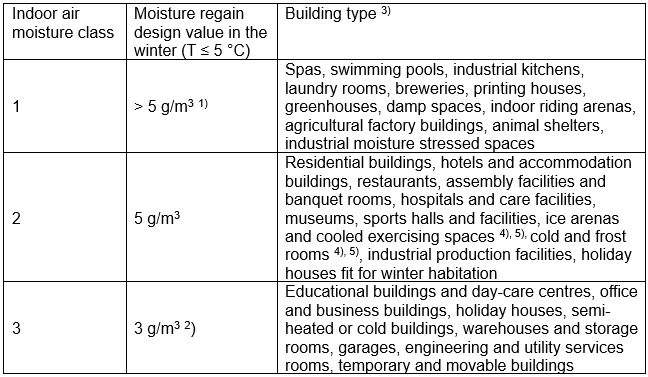Indoor air design conditions are required for building physical analyses, which have been determined by the Building Physics research group during several research projects since 2002. The key design conditions are indoor temperature, moisture regain and pressure difference.
Temperature
In the buildings where the indoor temperature is the standard ambient temperature, the temperature recommended to be used in analyses as the indoor temperature is constant 21 °C during all seasons. In reality, during the summer the indoor temperature is higher, but this design temperature also takes into account the effect of indoor cooling. This indoor temperature design value is also presented in the current RIL 107-2022 Water and moisture insulation instructions of buildings (in Finnish). In other buildings the indoor temperature used in the analyses must be estimated case-by-case.
Moisture regain
The indoor air moisture regain design values recommended in different building types are presented in the picture and table below. These same tables are also included in the current RIL 107-2022 Water and moisture insulation instructions of buildings (in Finnish). In the buildings of the indoor air moisture class 1 the moisture regain value is estimated case-by-case. In this case the summer and winter conditions should be considered separately.


When designing a building not presented in the above table, one must assess which building type in the table corresponds to the analysed building the best when it comes to indoor air conditions, and to choose the moisture class accordingly. In uncertain cases it is recommended to choose the moisture class with the larger moisture regain.
ATTENTION! the moisture regain design values mentioned earlier deviate from the values presented in the international SFS-EN ISO 13788 standard, but according to research performed these moisture regain design values better correspond to moisture regains in Finnish buildings.
Pressure difference
When studying the moisture moving into the structures through air leakages, the design value that can be used on the inside of the building during all seasons is +10 Pa of overpressure. When examining the effects of an air flow moving from the outside in on the performance of the structures, the design value to be used indoors is -15 Pa of underpressure during all seasons.
